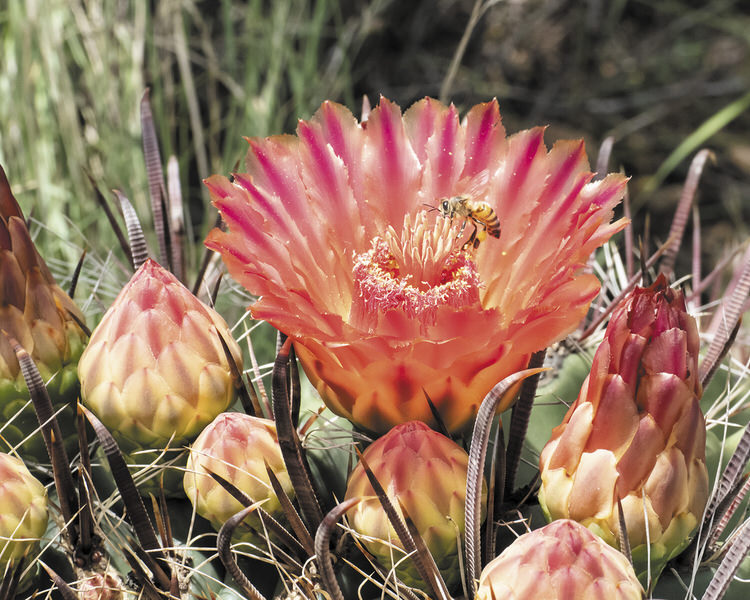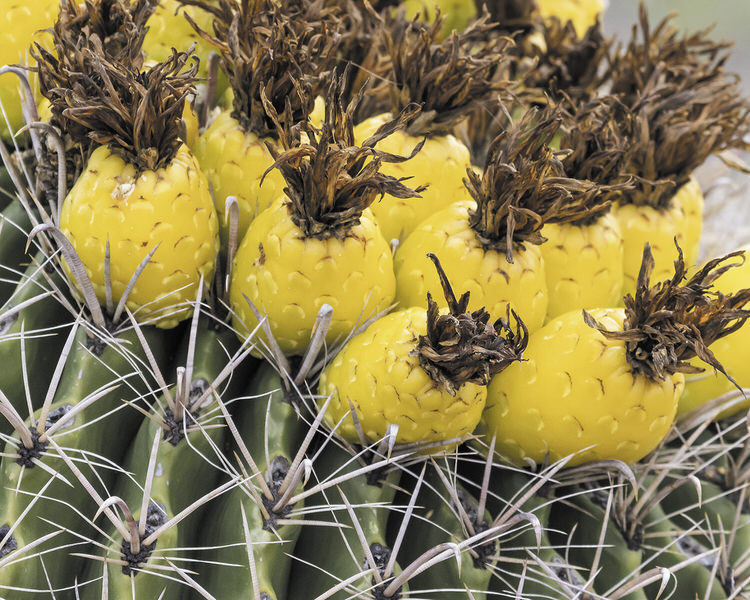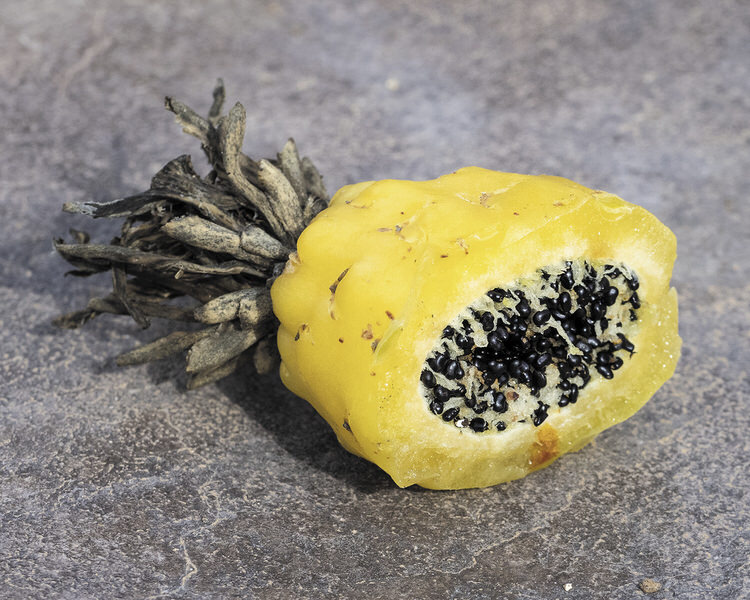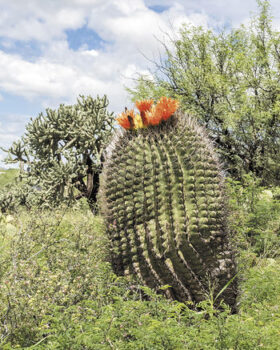
Fishhook barrel blossom and bee (photo by Gerald Tietje)

Fishhook Barrel fruit (photo by Gerald Tietje)

Fishhook Barrel seeds (photo by Gerald Tietje)

Fishhook Barrel Cactus leaning (photo by Gerald Tietje)
Gerald Tietje
Have you ever wondered what those barrel-looking cacti leaning to one side in the desert might be called? It’s the fishhook barrel cactus (Ferocactus wislizeni). It flourishes in southwestern Arizona, southern New Mexico, western Texas and northern Sonora, Mexico. Generally, these cacti are cylindrical in shape, 3 to 4 feet tall and 2 feet in diameter, although I’ve seen mature ones that must be almost 8 feet tall and have a diameter of 3 feet. They are the largest barrel cacti and live from 50 to 100 years. Their common name, fishhook barrel, relates to the plant’s spines, which densely cover the plant and protect it from herbivores like javelinas. Four central spines form a cross shape, and the two lower ones are stout and have large hooks on the end that resemble fish hooks. But interestingly, they also have another common name.
If you lived in the Midwest, as I did, you could tell north by looking at one side of a building, rocks, or trees to find moss growing on the north-facing side. In the Sonoran Desert, where I now live, we have another direction-finder, the fishhook barrel cactus. As these cacti mature, they tend to lean to the south/southwest; consequently, they can be used to find direction. This led to their other common name, the “compass barrel.” No one is sure why this leaning happens, although one theory is that the summer heat is so intense on the sunny side of these cacti that it slows its growth, compared to the other side, and causes the fishhook barrels to lean, a phenomenon unique to the fishhook barrel species.
Fishhook barrels are one of the plants that bloom in the summer, after monsoon rains have fallen, producing a conspicuous crown of bright yellow, orange, or red blossoms that are hard to miss. The flowers are pollinated by bees. As the flowers fade, they are replaced by spineless green fruit that turn a striking yellow color in winter. There are tiny dark black seeds within the fruit and mule deer, javelina, birds, and other desert animals find these seeds a great food source. According to Meg Quinn, author of Cacti of the Desert Southwest, the Seri and Tohono O’odham, Indigenous peoples who lived in Arizona and northwestern Mexico, obtained emergency liquid by cutting, pounding, and squeezing the pulp of these cacti. Inside, the barrel contains water, but this water contains oxalic acid which can cause diarrhea if ingested. They also ate the flower buds, inner flesh, fruit, and black seeds, which are quite sour. The Pima also used the long, curved spines as fish hooks.
Fishhook barrels, or compass barrels, are common along the SaddleBrooke Ranch Nature Trail, and are used as ornamentals in many yards. They take little care, grow in rocky soil, thrive in direct sun, and add special beauty to our landscape with their colorful blossoms in summer and long-lasting fruit in fall and winter.
